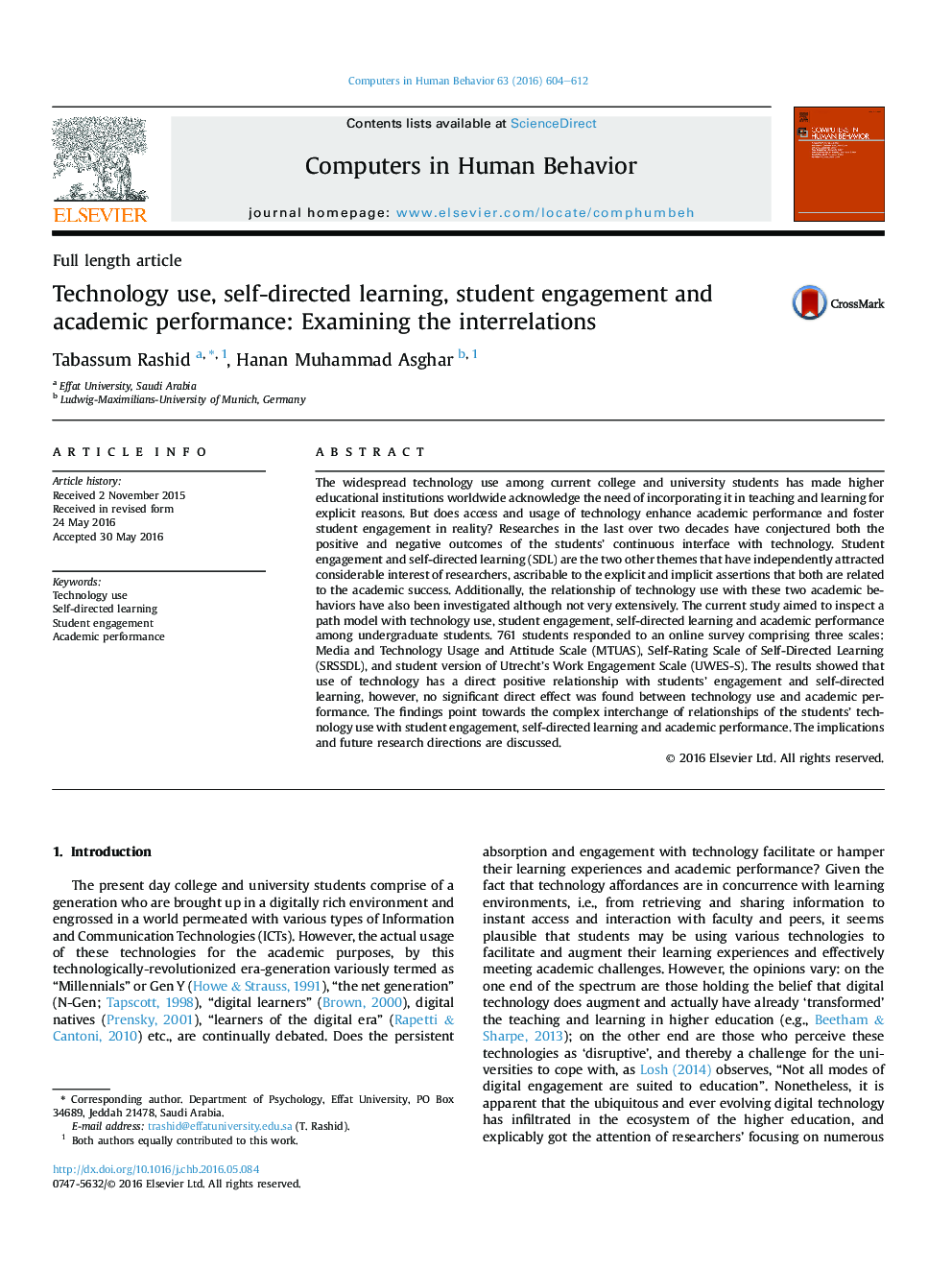| Article ID | Journal | Published Year | Pages | File Type |
|---|---|---|---|---|
| 6836760 | Computers in Human Behavior | 2016 | 9 Pages |
Abstract
The widespread technology use among current college and university students has made higher educational institutions worldwide acknowledge the need of incorporating it in teaching and learning for explicit reasons. But does access and usage of technology enhance academic performance and foster student engagement in reality? Researches in the last over two decades have conjectured both the positive and negative outcomes of the students' continuous interface with technology. Student engagement and self-directed learning (SDL) are the two other themes that have independently attracted considerable interest of researchers, ascribable to the explicit and implicit assertions that both are related to the academic success. Additionally, the relationship of technology use with these two academic behaviors have also been investigated although not very extensively. The current study aimed to inspect a path model with technology use, student engagement, self-directed learning and academic performance among undergraduate students. 761 students responded to an online survey comprising three scales: Media and Technology Usage and Attitude Scale (MTUAS), Self-Rating Scale of Self-Directed Learning (SRSSDL), and student version of Utrecht's Work Engagement Scale (UWES-S). The results showed that use of technology has a direct positive relationship with students' engagement and self-directed learning, however, no significant direct effect was found between technology use and academic performance. The findings point towards the complex interchange of relationships of the students' technology use with student engagement, self-directed learning and academic performance. The implications and future research directions are discussed.
Related Topics
Physical Sciences and Engineering
Computer Science
Computer Science Applications
Authors
Tabassum Rashid, Hanan Muhammad Asghar,
